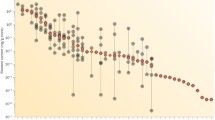Abstract
We investigated contents and classes of urinary and stone matrix lipids, and evaluated their clinical relevance in nephrolithiasis patients. Lithogenic role of major lipid classes was explored. Urine (24 h) and stone samples were collected from 47 patients with nephrolithiasis. Control urines were obtained from 29 healthy subjects. Urinary 8-hydroxy-deoxyguanosine (8-OHdG), malondialdehyde (MDA), N-acetyl-β-glucosaminidase (NAG) activity and total proteins were measured. Total lipids were extracted from centrifuged urines (10,000 rpm, 30 min) and stones by chloroform/methanol method. Major classes of lipids were identified using multi-one-dimensional thin-layer chromatography (MOD-TLC). Influence of each lipid class purified from stone matrices on stone formation was evaluated using crystallization and crystal aggregation assays. Urinary NAG activity and 8-OHdG were significantly elevated in nephrolithiasis patients. Total lipids in centrifuged urines of the patients were not significantly different from that of controls. In nephrolithiasis, urinary excretion of total lipids was linearly correlated to urinary MDA, 8-OHdG, NAG activity and total proteins. Lipid contents in stone matrices varied among stone types. Uric acid stone contained lower amount of total lipids than calcium oxalate and magnesium ammonium phosphate stones. MOD-TLC lipid chromatograms of healthy urines, nephrolithiasis urines and stone matrices were obviously different. Triacylglyceride was abundant in urines, but scarcely found in stone matrices. Stone matrices were rich in glycolipids and high-polar lipids (phospholipids/gangliosides). Partially purified glycolipids significantly induced crystal aggregation while cholesterol was a significant inducer of both crystal formation and agglomeration. In conclusion, total lipids in centrifuged urines did not differ between nephrolithiasis and healthy subjects. Our finding suggests that the significant sources of lipids in patients’ urine may be large lipids-containing particles, which are removed in centrifuged urines. However, urinary lipid excretion in nephrolithiasis patients was associated with the extent of oxidative stress and renal tubular injury. Triacylglyceride was abundant in urines, but rarely incorporated into stones. Glycolipids were principal lipid constituents in stone matrices and functioned as crystal aggregator. Cholesterol purified from stone matrices bared crystal nucleating and aggregating activities.







Similar content being viewed by others
References
Tosukhowong P, Boonla C, Ratchanon S, Tanthanuch M, Poonpirome K, Supataravanich P, Dissayabutra T, Tungsanga K (2007) Crystalline composition and etiologic factors of kidney stone in Thailand: update 2007. Asian Biomed 1:87–95
Jungers P, Joly D, Barbey F, Choukroun G, Daudon M (2004) ESRD caused by nephrolithiasis: prevalence, mechanisms, and prevention. Am J Kidney Dis 44:799–805
Cheng PT, Reid AD, Pritzker KP (1985) Ultrastructural studies of crystal-organic matrix relations in renal stones. Scan Electron Microsc (Pt 1):201–207
Khan SR (1995) Heterogeneous nucleation of calcium oxalate crystals in mammalian urine. Scan Microsc 9:597–614 discussion 614–616
Khan SR, Kok DJ (2004) Modulators of urinary stone formation. Front Biosci 9:1450–1482
Fleming DE, Van Riessen A, Chauvet MC, Grover PK, Hunter B, van Bronswijk W, Ryall RL (2003) Intracrystalline proteins and urolithiasis: a synchrotron X-ray diffraction study of calcium oxalate monohydrate. J Bone Miner Res 18:1282–1291
Grover PK, Thurgood LA, Fleming DE, van Bronswijk W, Wang T, Ryall RL (2008) Intracrystalline urinary proteins facilitate degradation and dissolution of calcium oxalate crystals in cultured renal cells. Am J Physiol Renal Physiol 294:F355–F361
Kim KM (1983) Lipid matrix of dystrophic calcification and urinary stone. Scan Electron Microsc (Pt 3):1275–1284
Khan SR, Shevock PN, Hackett RL (1988) Presence of lipids in urinary stones: results of preliminary studies. Calcif Tissue Int 42:91–96
Khan SR, Atmani F, Glenton P, Hou Z, Talham DR, Khurshid M (1996) Lipids and membranes in the organic matrix of urinary calcific crystals and stones. Calcif Tissue Int 59:357–365
Khan SR, Shevock PN, Hackett RL (1988) In vitro precipitation of calcium oxalate in the presence of whole matrix or lipid components of the urinary stones. J Urol 139:418–422
Fasano JM, Khan SR (2001) Intratubular crystallization of calcium oxalate in the presence of membrane vesicles: an in vitro study. Kidney Int 59:169–178
Khan SR, Maslamani SA, Atmani F, Glenton PA, Opalko FJ, Thamilselvan S, Hammett-Stabler C (2000) Membranes and their constituents as promoters of calcium oxalate crystal formation in human urine. Calcif Tissue Int 66:90–96
Khan SR, Glenton PA (1996) Increased urinary excretion of lipids by patients with kidney stones. Br J Urol 77:506–511
Khan SR, Glenton PA, Backov R, Talham DR (2002) Presence of lipids in urine, crystals and stones: implications for the formation of kidney stones. Kidney Int 62:2062–2072
White T, Bursten S, Federighi D, Lewis RA, Nudelman E (1998) High-resolution separation and quantification of neutral lipid and phospholipid species in mammalian cells and sera by multi-one-dimensional thin-layer chromatography. Anal Biochem 258:109–117
Buk SJ, High OB (1986) Periodate oxidation of glycolipids: a borohydride-periodate-Schiff method for ganglioside demonstration in tissue sections. Histochem J 18:228–232
Atmani F, Khan SR (2000) Effects of an extract from Herniaria hirsuta on calcium oxalate crystallization in vitro. BJU Int 85:621–625
Christmas KG, Gower LB, Khan SR, El-Shall H (2002) Aggregation and dispersion characteristics of calcium oxalate monohydrate: effect of urinary species. J Colloid Interface Sci 256:168–174
Boonla C, Hunapathed C, Bovornpadungkitti S, Poonpirome K, Tungsanga K, Sampatanukul P, Tosukhowong P (2008) Messenger RNA expression of monocyte chemoattractant protein-1 and interleukin-6 in stone-containing kidneys. BJU Int 101:1170–1177
Boonla C, Wunsuwan R, Tungsanga K, Tosukhowong P (2007) Urinary 8-hydroxydeoxyguanosine is elevated in patients with nephrolithiasis. Urol Res 35:185–191
Sheng X, Jung T, Wesson JA, Ward MD (2005) Adhesion at calcium oxalate crystal surfaces and the effect of urinary constituents. Proc Natl Acad Sci USA 102:267–272
Acknowledgments
Supported by New Researcher Grant from Chulalongkorn University. P.Y. was awarded a thesis supporting grant from Graduate School, Chulalongkorn University. We thank Dr. Supoj Ratchanon, an urologist for helping in specimen collection.
Author information
Authors and Affiliations
Corresponding author
Rights and permissions
About this article
Cite this article
Boonla, C., Youngjermchan, P., Pumpaisanchai, S. et al. Lithogenic activity and clinical relevance of lipids extracted from urines and stones of nephrolithiasis patients. Urol Res 39, 9–19 (2011). https://doi.org/10.1007/s00240-010-0281-6
Received:
Accepted:
Published:
Issue Date:
DOI: https://doi.org/10.1007/s00240-010-0281-6



